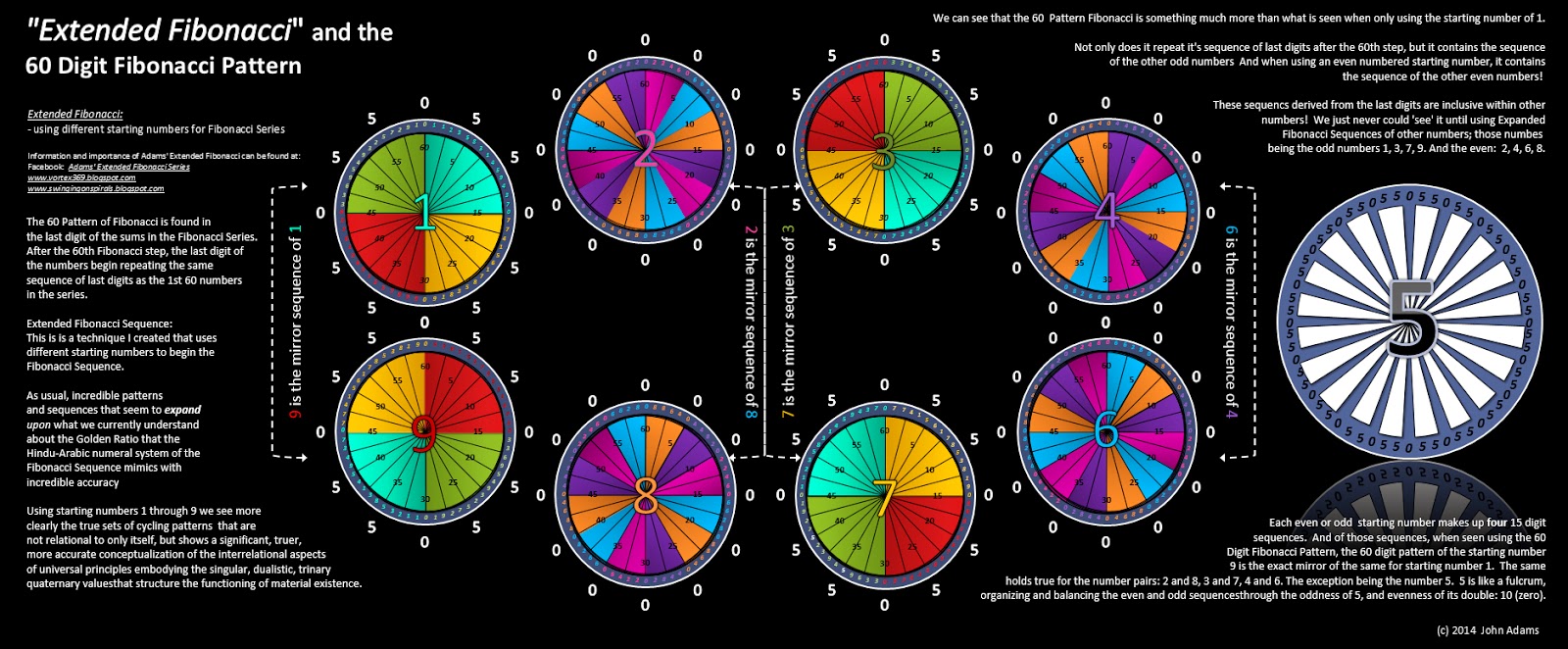(I've included the Extended Fibonacci graphic for reference)
The color coding denotes the Sequence that arise from the individual number, not the number itself.
The 4 odd numbers (1, 3, 7, 9), the exception being number 5, have the pattern sequences of itself and the other 3 occurring every 15 Fibonacci steps.
The color coding denotes the Sequence that arise from the individual number, not the number itself.
The 4 odd numbers (1, 3, 7, 9), the exception being number 5, have the pattern sequences of itself and the other 3 occurring every 15 Fibonacci steps.
The 4 even numbers (2, 4,
6, 8) have the pattern sequences of itself and the other 3 occurring
every 5 Fibonacci steps, the full set of which recur every 20 Fibonacci
Steps.
The number 5 and its multiples seems to be the fulcrum.
- Chad Adams
The number 5 and its multiples seems to be the fulcrum.
- Chad Adams



Nice find!! 60 is the number of 'time', and it's at the top of the clock.
ReplyDeleteThis research finding that examines the last digit - are we looking at the 'face' of a clock? A spiral clock?
At 60, a conventional clock can progress no higher (the cycle starts over).
At 666, mankind progresses no higher (starting over perhaps)?
starting for the first time ;) ..ever... into an entirely new era :)
ReplyDelete